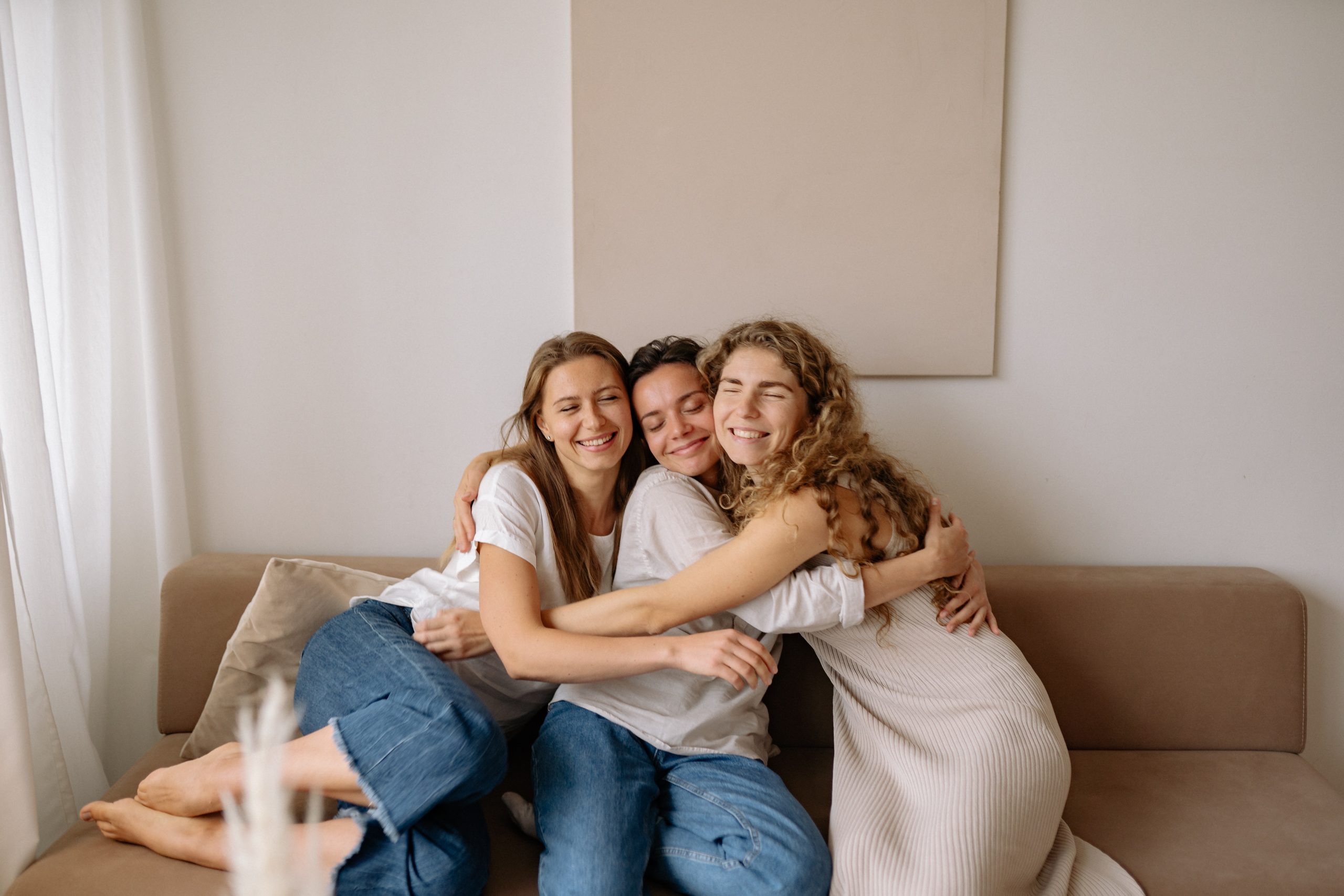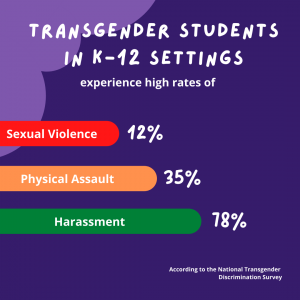These days, we can’t get away from images of “happy beautiful people” who populate our digital world. Just check out all the carefully curated posts in your social media feed, not to mention media advertisements and content –no wonder they collectively fuel unattainable body expectations.
But the problem isn’t limited to unrealistic media imagery. We also compare ourselves to people we know – classmates, teammates, coworkers.
We all have things we don’t like about the way we look — weight, height, skin, hair, muscularity, shape, voice, smile, style…whatever it is, it’s easy to hyperfocus on it, and to think that’s all that other people see in you as well.
How we see ourselves, and how we think others see us, has a lot to do with how we feel day to day, fueling feelings that easily spiral into depression, anxiety, and other mental health issues. To combat the negative impact that looks can have on self-esteem, the body positivity movement has gained national attention and flooded our timelines in recent years. The movement promotes being comfortable in your own skin, offering messages like “You’re beautiful just the way you are,” or “Love your imperfections.”
This movement may feel like it’s recent, but it’s actually been around since the 1960s! To understand its true meaning, we need to go back to 1969 during the Fat Rights Movement, when a young engineer from New York named Bill Fabrey was angry about the way the world was treating his overweight wife, Joyce. He gathered a small group of people and created the National Association to Aid Fat Americans, today known as the National Association to Advance Fat Acceptance (NAAFA) to promote body positivity through community activism.
It’s easy to preach positivity, but sometimes not so easy to truly feel it. Want to transform your life and change how you see yourself? Here are some ideas on how to embrace yourself and help others feel better as well. You deserve it – we all do!
A Guide to Embracing Yourself
Focus on how you feel instead of on the scale
There is no one body type that’s ‘perfect’ or ‘healthy.’ So don’t get caught up in the numbers, or what’s in the mirror, when you are measuring the progress of your health journey. Instead, focus on how you feel physically and mentally, and remember that a number on a scale does not measure your body composition, the ratio of muscle to fat in your body, or your energy, spirits, or enjoyment of life!
Remember to speak to a health professional you trust. They can help you better understand your body’s needs, choose healthy habits and behaviors, and set realistic goals. Understand and accept that if you do want to make changes to any aspect of your health, it will take a combination of large and small goal-setting, and a lot of commitment, patience and effort. But you can get there, especially if you have faith in yourself. And it never hurts to have good professional help in your corner!
The numbers that we often focus on – weight, BMI, and bodyfat percentage – are each only a small part of our overall wellbeing. Check out this social experiment to see how misleading those numbers can be and how hard it can be to guess them.
Avoid body-shaming yourself
Focus on what you DO like about yourself and your body, rather than what you don’t. Celebrate it and play it up! Try to avoid giving voice to body-shaming thoughts or comments. Be a friend to yourself – that includes your body!
Take care of your body
Learn to recognize and give your body what it needs – like rest, relaxation, destressing, healthy food, and activity. Learning to love and care for yourself includes loving and caring for your body – and that starts with awareness.
Get Inspired
Embracing yourself includes taking time to do whatever brings you joy. Not sure where to start? Write down the things that make your heart, your mind, AND your body feel good. Look for people and activities that encourage you and build you up, both in the real and digital worlds. Find sources of inspiration and motivation that keep you positive and help you work toward your goals.
Use Positive Affirmations
Despite best efforts, it’s easy to look in the mirror, give in to your insecurities and make judgments about yourself. These negative thoughts can really affect your mental health especially if they develop into a pattern of behavior which alters the way you view yourself and others.
Positive affirmations challenge these negative thoughts by reminding you that you’re worthy, strong and beautiful. They help you remember to be kind to yourself. They say talking positively to plants helps them grow — imagine what it can do for yourself and those around you.

Here are some affirmations you can say to yourself:
- My body is beautiful, my mind is strong.
- I am at peace with my body, my mind, and my life.
- I love myself yesterday, today and tomorrow.
More affirmation for every aspect of your life.
Curate Your Social Media
We spend 5.4 hours a day on our phones, so it’s important to be intentional about the content we consume. Social media platforms curate your feed based on content in which you show interest, and the people and organizations you engage with and follow. Review your feed and ask yourself: does this content help me mentally or physically? Does it inspire me? Does this person make me feel good about myself?
If the answer is no, it is best to unfollow them and look for people who do. Follow social media accounts that truly align with your life goals. Not only will this boost your self-esteem, mental health and well-being, it will help you redirect yourself toward the life and self-image you want and deserve.
Beauty is Defined by YOU.
“The best and most beautiful things in the world cannot be seen or even touched but must be felt with the heart.” Despite Helen Keller’s sight and hearing disabilities, she felt and was constantly inspired by the beauty of the world.
Beauty is defined by you –not by a number on a scale or by other people’s opinions. So, love and care for yourself. Your sense of confidence and conviction will not only inspire and sustain you – others will feel and respond to it as well.
Women Who Embrace Body Positivity
- Ashley Graham — The first size-16 model to land on the cover of Sports Illustrated. The supermodel quickly became an icon and example of body positivity in the fashion industry.
- Lizzo – This singer and songwriter doesn’t shy away from advocating for the body positivity movement. The Grammy Award-winning artist has been open about how society judges people’s appearances, and about negativity towards plus-size women.
- Estefania (Tefi) Pessoa – Famous for her TikToks about pop culture and life advice. She is known for her personality and views about the beauty industry, as she shared her struggles with an eating disorder in her teens.
- Laverne Cox – You might know her from the Netflix show Orange Is The New Black. The actress and LGBTQ advocate makes it a priority to inspire others to love themselves, across all identities, shapes, and sizes.
- Jules Von Hep – Influencer, podcast host and celebrity tanning expert. He’s best known as a promoter of body positivity and inclusivity in his videos.
For more inspiring people to follow, click here.
Need more help?
If you or a loved one feel depressed or are having a hard time with self-image or self-esteem, consider talking to a mental health professional. Find a safe person and space in which to talk. The Bougainvilla House is here for you, with an understanding and welcoming environment for you and your family. Take that important first step and ask for help.
The Bougainvilla House also offers Parenting Workshops to provide tools and strategies that support healthy families and nurture future generations as they grow.
Call now to find support that works for you and your family: (954) 764-7337.






 Why are pronouns important?
Why are pronouns important?  According to the
According to the